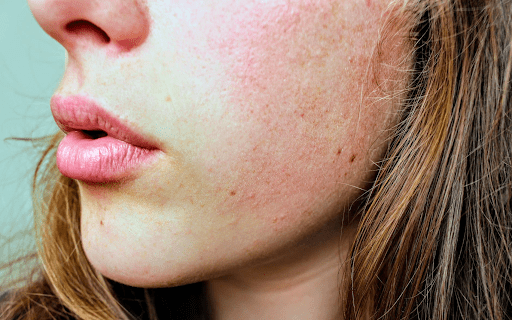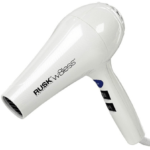Blemishes are marks, spots, or discoloration on the skin. We often cover them up with makeup or use special facial cleansing products. When nothing seems to work, we seek medical treatment in hopes of wiping them away for good.
A blemished face may be unsightly and upsetting, but most blemishes are not life-threatening. They can be eliminated using medical treatment or at-home remedies. In this guide, we’ll go over common types of blemishes, their causes, and the treatment options available.
Read on to learn more, beautiful!

Types of Skin Blemishes
Any mark, spot, or discoloration on your face is called a blemish. Here is a list of the most common skin blemishes:
Acne
Acne affects 50 million Americans each year. This blemish can appear as pimples, blackheads, or whiteheads and is caused by oil, dirt, or bacteria on the skin. When hair follicles become clogged, acne arises. The aftermath of acne can lead to scarring or dark spots.
Papules
Next up are papules or small lesions. These vary in type but are typically 1 centimeter in diameter. Pimples are sometimes referred to as papules and can range in colors from pink to brown. They can appear in clusters or individually. Some examples include
- – Chickenpox rashes
- – Dermatitis
- – Eczema
-
Birthmarks
Many of us are born with birthmarks. Birthmarks range in shape, size, color, and appearance. While some fade over time, others like moles or port-wine stains last a lifetime unless surgically removed.
Scars
Scarring occurs when the dermis layer of the skin becomes damaged. Anything that causes the skin to open can lead to scarring. This includes wounds or popping pimples.
Hyperpigmentation
Hyperpigmentation is a result of the overproduction of melanin. It can cause an uneven skin tone or dark patches. Causes of hyperpigmentation include sun exposure, hormonal changes, or acne scarring.
What Causes Blemishes?
Wondering what causes these marks in the first place? There are a number of reasons; however, most commonly they are a result of genetics, sun exposure, clogged pores, diet, or medications.
Blemishes like birthmarks are a cause of genes while hyperpigmentation is a cause of sun exposure. Acne and papules are caused by clogged pores, while skin rashes or bumps can be caused by the food you eat (allergic reactions/dermatitis).
The cause of some blemishes may even be a side effect to some of the medications you’re taking, whether that’s over-the-counter or prescription medicines.
How to Treat Blemishes
The best way to treat blemishes is by cleansing your skin thoroughly and sanitizing makeup. Think about it – if you’re using dirty brushes on your skin, it will cause your face to break out due to the bacteria and germs on your makeup.
Healthy hygiene habits may be the solution to several blemishes. However, sometimes the treatment depends on the type of blemish and its cause. If at any point the condition gets worse, seek medical attention.
Other treatments for blemishes include the following:
- – Acne medications
- – Salicylic acid
- – Hydrocortisone cream
- – Sun protection
- – Dermatologic procedures
-
When It’s Time To See Your Doctor
Most blemishes can be treated; however, some can sometimes signal a serious condition. If you notice any of the following in your blemish(es), it’s time to see your doctor:
- – Changes in color or size
- – Bleeding
- – Irregular borders
-
These may be signs of skin cancer.
If a virus like chickenpox or cold sores causes your blemishes, a doctor may be able to speed up the recovery process by recommending treatment.
For papules or pustules, your doctor may be able to prescribe either oral or topical antibiotics. Sometimes, topical retinoids can be used as medication.
Finally, if you have blemishes that were caused by ingrown hairs that aren’t responding to home treatment, your doctor may be able to clean the area. This will free the hair and eliminate the blemish.
Maintaining Healthy Skin
Now that you know what are blemishes, what causes them, and how to treat them, consider implementing a healthy skincare routine. Following one religiously will keep blemishes away and lead to healthier skin. Here are the basics:
- – Cleansing. Use a gentle facial cleanser each morning and night to rid your skin of dirt, oils, and makeup residue.
- – Toner. A toner helps balance the skin’s pH balance.
- – Moisturize. Next, hydrate your skin using a moisturizer. Sunscreen is a great moisturizer that protects skin from the harsh rays of the sun.
-
Following these 3 steps each day will keep your skin looking and feeling healthy.


